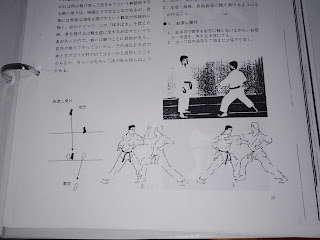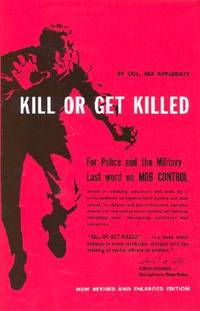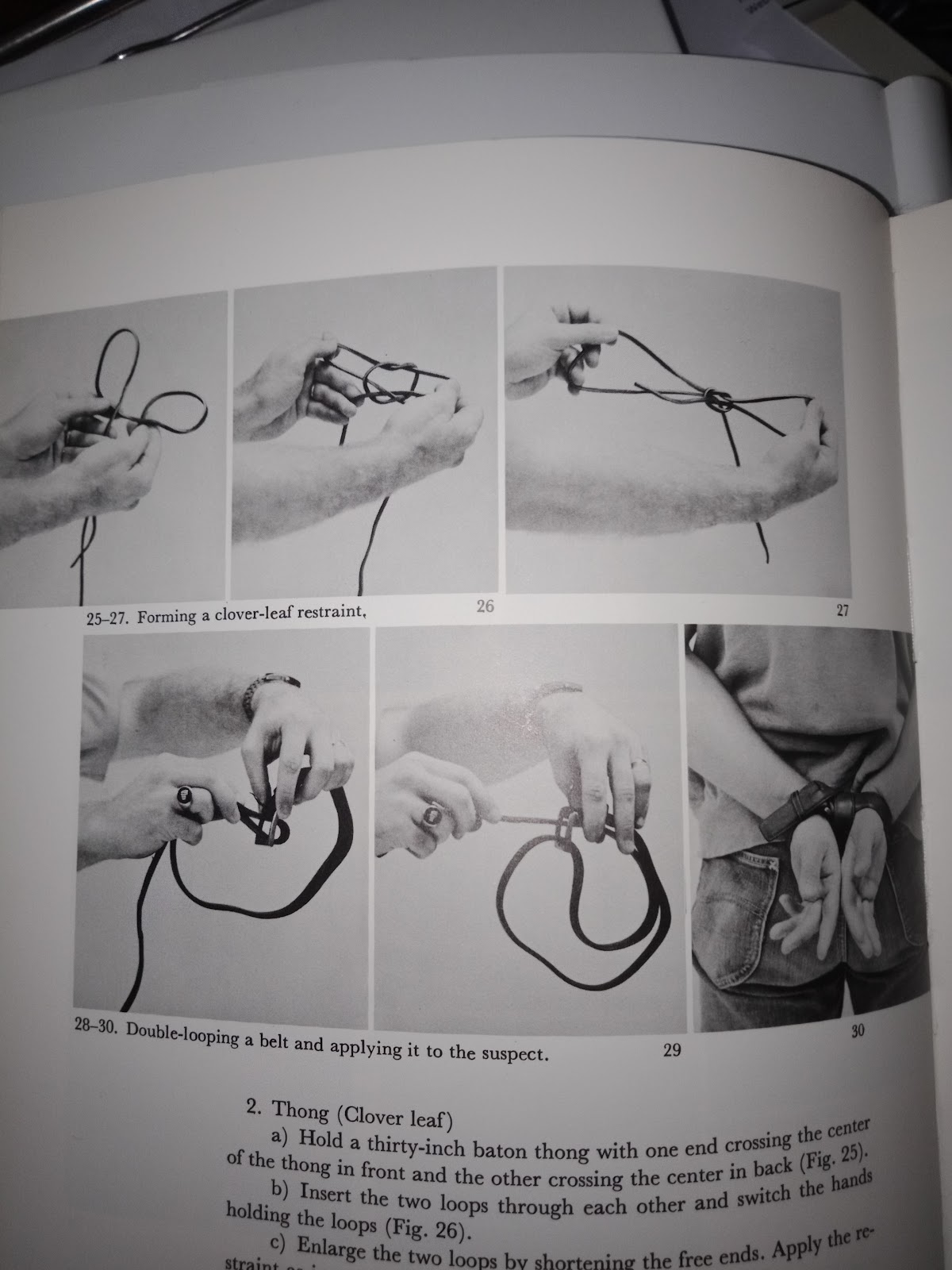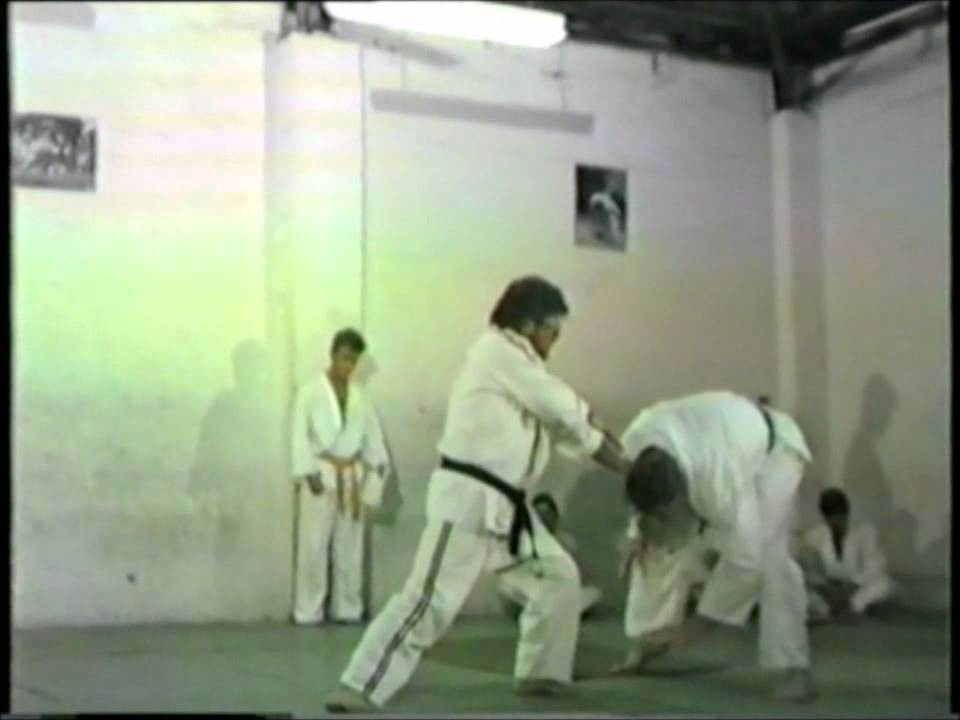The recent series of posts have explored the development of the Jan de Jong (JDJ) jujutsu grading system.
JDJ had three grading systems at his school, the Jan de Jong Self Defence School (JDJSDS): jujutsu, aikido, and pencak silat. For the sake of not repeating for the sake of technical specificity, the following will refer to JDJ's jujutsu grading system as JDJ's grading system.
Within those posts, we saw that the technical grades within the JDJ grading system finish at sandan (3rd dan). All higher grades are honorary.
The idea that the technical grades in JDJ's grading system finish at sandan is based on JDJ's reported experience with his original instructors, the Saito brothers. The narrative is that the technical grades finish at sandan in the Tsutsumi Hozan Ryu grading system that the Saito brothers taught, and that JDJ completed them and was awarded sandan by the Saito brothers in 1939 (Jan de Jong: the man, his school and his ju jitsu system, Jan de Jong Self Defence School, 1997 (JDJ book)).
The adult technical grades in JDJ's final grading system commence with 9th kyu (of the mon system) and finish with sandan. From nikyu (2nd kyu) to sandan, there are multiple parts to the gradings, as the recent series of posts explain and explore.
The total number of gradings and their individual parts from 9th kyu to sandan is 46. Forty-six gradings for an adult to complete the technical grades in JDJ's grading system.
JDJ recognised that his grading system was far more extensive and comprehensive than any other going around and wanted to acknowledge the efforts of his successful students by including a list of the parts of the gradings on their certificates. I pointed out that the list would only be included on the back of the certificate, which nobody would see, and that in and out of the martial arts, a black belt is perceived as being a black belt no matter the grading system from which it came from.
A relatively common question that is asked is: how long does it take to get a black belt in JDJ's grading system? The commonly conceived wisdom is 10 years. Where did that number come from?
This post explores the question of, how long does it take to complete the technical grades in JDJ's grading system and to subsequently be awarded sandan?
There are five people who have completed the technical grades in JDJ's grading system and been awarded sandan by JDJ (and those five are also the only ones to have completed nidan (2nd dan) under JDJ): Peter Clarke, Robert Hymas, Paul Connolly, Greg Palmer, and myself, however, there is also JDJ under the Saito brothers.
According to the JDJ book, JDJ commenced training in 1928 and was awarded sandan in 1939 = 12 years. He started training at the age of seven, which makes him 18-19 when he was awarded sandan under the Saito brothers. That timeline raises many questions, which thankfully are beyond the scope of this post.
The following training commencement dates are taken from the JDJ book. The date of the awarding of sandan is taken from Greg Palmer's records:
What can be made of those numbers?
You will recall from a previous post that the original JDJ grading system was the kyu system. The shodan grading was developed so that JDJ could have some black belt instructors accompany him to Europe to advance his European teaching ambitions. I don't know the date of the introduction of the shodan grading(s), but it has to have been in the very late 70s.
Clarke and Hymas were awarded shodan in 1981, Connolly in 1982, and Palmer in 1984. The latter two's numbers are distorted because there was no shodan to grade during their earlier years. Hymas' numbers are distorted because he was working full-time as an instructor at the JDJSDS at that time.
Clarke's numbers would probably be the most representative of the first four given that he commenced training not long before the
shodan gradings were introduced and he didn't work full-time at the JDJSDS. What makes his achievement even more remarkable is the fact that he was a partner in a leading law firm in the city at the time, and as such was time poor, however, he and Hymas (and possibly Connolly) did the
shodan shinken shobu no kata as a demonstration whereas all those that followed had to perform it in true reflex fashion (see this
post regarding this issue).
In addition, none of the first four had to go through the mon grades as those grades were introduced when they were instructors (who then went on to teach the mon grades that they had not undertaken).
So, I might be the most indicative of the five sandans that were graded under JDJ given that I went through the mon system and shodan shinken no kata reflex style, and the nidan and sandan gradings were developed before I was a qualifying candidate.
My Shodan
I commenced training on the third Wednesday in April 1983 in Ian Lloyd's class and was awarded shodan in February 1993 - a little shy of 10 years. That would appear to support the commonly conceived wisdom of a minimum of 10 years to be awarded shodan. Or does it?
When I commenced training, I started off by attending two lessons a day, six days a week, and engaging in a lot of extra training (see this post). That is 12+ hours a week, 48+ hours a month, and based on a 45-week year, 540+ hours a year. Most people start off, and often continue with, one or two lessons a week and maybe a little extra training. That is 1-2+ hours a week, 4-8+ hours a month, and based on a 45-week year, 45-90+ hours a year.
A ludicrous calculation based on the above, but if we say that it takes 540 hours training a year to be awarded shodan in 10 years, then the average person training 90 hours a year can expect to be awarded shodan in 60 years. :)
There were other factors in my 10-year shodan qualification.
During that time, I engaged in what was then an Australian rite of passage in backpacking in Europe for a year. I also completed the Chartered Accountants 'professional year,' which was actually 18 months, where candidates do not see the light of day for that period of time, and completed the Securities Institute of Australia graduate diploma in which I was awarded State Dux, which was another 18-month commitment. That had to have slowed down my progress to shodan.
What is obvious is that I, along with the other four sandans, am not an indicative example of the time it takes to be awarded shodan in the JDJ jujutsu grading system.
My Nidan
I was awarded nidan in December 1998, five years after I was awarded shodan. I had to reflect on those years as training and undergoing the nidan grades does not stand out in my memory. As it turns out, I was a little busy at the time.
Did I train for nidan for those five years with the same intensity as described above? No, however, I was working full-time as an instructor at the JDJSDS from mid-90s to 2000.
To counter that, I also engaged in the UWA (University of Western Australia) Master of Business Administration (MBA), an elite, time-intensive, business course, in the mid-90s. I worked full-time while studying the MBA full-time (nobody does that), and at that time it was an 18-month course rather than the 12-month course as most MBAs are these days. And now that I remember it, I also lived and worked in London for between nine months and a year shortly after grading shodan.
Completing the
nine parts of the
nidan grading would probably have taken me more like two years or more likely less.
I had to go back over the
nidan gradings to remember them as I said above, they do not stand out in my memory. In doing so, I remember that I did those grades with Greg Palmer.
Greg had a long-held ambition/dream to complete JDJ's grading system. He initially started training with Clarke, Hymas, and Connolly, however, they quickly left him behind because they were in a race to the finish line. Greg approached me to help him realise his ambition/dream. I had no ambition to be awarded
shodan, let alone
nidan and
sandan, but Greg being Greg would not allow me to help him in realising his ambition/dream unless I graded too.
Looking back on the records, Greg had already graded nidan by the time we started working on my nidan. I had to be graded nidan before Greg would consider training for sandan, in Greg's eyes. In all honesty, I was happy to remain shodan but would still train with Greg for him to realise his ambition/dream, and I said/argued as much. Nonetheless, Greg taught me what needed to be taught to be awarded nidan before we started preparing for sandan.
The
nidan grading and its component parts are discussed in this linked
post. The following are comments on some of those parts.
Part 2 Ju Jitsu no Jitsuen: 'Arrange a demonstration using up to eight lower grades to show some aspect of jujutsu. Twenty minutes of explanation type demonstration and ten minutes of fast action are required to be shown.' Given that this grading is intended to examine a candidate's knowledge and ability to arrange a demonstration that informs the public what jujutsu is and in particular what Jan de Jong jujutsu is, I convinced JDJ to judge me on a 'real' demonstration that I had arranged for an open day at Wesley College.
How long did it take to prepare? Not long. If you know your stuff, know your students, and choose skilled and trained students, it doesn't require much training at all. By that stage, I had been part of and organised more demonstrations locally, nationally, and internationally than I can remember.
Part 3 Shinken Shobu no Kata: 'Reflex grading.' You will recall from the above 'nine parts' link that the number of attack-defence combination in
nidan was reduced from 140 in
shodan to 52 in
nidan. Given that I was highly trained and highly proficient, and the attack-defence combinations are all just variations on a theme from previous gradings, not a lot of training was required to master the attack-defence combinations in this grading.
Part 7 Shiai: 'Free fight with tanto vs tanto.' A group of us attempted this grading together. If I recall, the group included myself, Debbie Clarke, Ian Lloyd, and Hans de Jong. Maybe John Martyr.
How long does it take to train this grading? Given that knife fighting was not taught at the JDJSDS and given that no instructions were provided as to what is sought and graded in this grading, as long or as short as the candidate wants. My training consisted of a little training with the fellow candidates in order to determine their abilities and tactics, and then to devise tactics to defeat them. I didn't train those tactics, however, I successfully employed them.
Part 8 Jutsuri no Kata: 'Oral examination conducted with at least two other candidates, discussing the technical aspects on any technique selected by Shihan Jan de Jong.' No 'training' necessary in order to attempt this grading. No 'training' necessary in my case given that my mentor was Greg Palmer, who JDJ acknowledged as having the best technical knowledge of the techniques and tactics taught at the JDJSDS, and because of my natural and learned analytical nature and capabilities.
Part 9 Ju Jitsu Rekishi: 'Candidates are required to submit an essay with no less than 3000 words on a topic to be approved by Shihan Jan de Jong.' JDJ credited me with this part of the grading based on the
international franchise proposal that I had prepared for him after accompanying him to Jakarta, Indonesia to meet with a Chinese-Indonesian entrepreneur who was prepared to fully fund the start-up. A lost opportunity if ever there was one.
I imagine that JDJ would have likewise credited Clarke with this part of the grading given his many contributions to JDJ's efforts over the years, including developing the
AJJA dan grading system and their
competition format, and providing a comprehensive explanation of both for AJJA consumption. Greg could have been credited with this part of the grading for his development
ken no michi grading that was introduced by JDJ into his
ikkyu grading. It would be interesting to know what Hymas and Connolly did to satisfy the requirements of this part of the
nidan grading.
My Sandan
I completed
nidan in December 1998 and
sandan in May 2000, approximately 16 months to successfully complete
12 gradings - the fastest ever (Clarke 8yrs, Hymas and Connolly 7yrs, Palmer 4yrs).
The above linked '12 gradings' post explores and discusses the parts that make up the sandan grading. The following are some comments on some of those parts.
Part 1 Kime no Kata: 'Explain the theory and answer questions on demonstrated techniques.' The demonstrated techniques are simply variations on a theme, so no real training is required, and if anyone is going to successfully answer theory questions raised on those techniques, it was Greg and myself. In fact, I explained in the sandan post that Greg was disappointed when JDJ didn't ask us any questions and confronted him about it. JDJ said he knew that we knew the theory about the techniques.
Part 2 Ju Jitsu no Jitsuen: 'Arrange a ten-minute demonstration on a topic given by Shihan Jan de Jong using only yudansha. Twenty minutes preparation time will be allowed.' No training possible for this grading.
I cannot remember what my topic was, however, I do remember that JDJ and some others being kind enough to suggest that my demonstration was the best presented out of all five sandans. If memory serves, Connolly's subject was 'ground techniques.' I would suggest that JDJ was taking the opportunity to explore 'ground techniques' at the time as this was about the time of the emergence of so-called Brazilian jiu-jitsu and their emphasis on 'ground techniques.' We have techniques to defend while on the ground, however, it cannot be said that we teach 'ground techniques' as it came to be understood.
Even though I had the likes of Clarke, Hymas, and Greg included in my demonstration, Connolly was not included, the difficult part was in catering for their limitations as they were not the most athletic of jujutsuka.
Part 3 Taisabaki no Kata: 'Prepare a kata to show the different variations of the body movements.' In reality, no training is required. It should be expected at this level that the required
kata could be developed on the spot let alone using a similar/the same format as the previous grading.
Part 4 Sutemi no Kata and Taoshiwaza no Kata: demonstrate 20 sacrifice throws and 20 takedown techniques and answer theory questions thereon. The training for the sacrifice throws only needed to be brushed up because they had been taught and trained throughout the grading/training experience, beginning with tomoe nage in 6th kyu, yellow belt.
There were new takedown techniques included in the grading, although technically 25 percent are throws based on my biomechanical distinction between throws and takedowns in my as yet unpublished The Science Behind All Fighting Techniques, but again, most are simply variations on a theme. It is interesting that a JDJ ryuha has omitted this part of this part of this part of their syllabus, probably because the head of that ryuha did not grade beyond shodan and was unfamiliar with the techniques and their variations.
Part 5 Kodachi no Kata: 'Demonstration of kodachi (wakizashi) techniques against katana.' The techniques are relatively simple so not a lot of training is required to be grading-ready.
Part 6 Hojo Jutsu: 'Demonstrate use of rope to tie up an opponent.' As explained in a previous post, the demonstration is not from an attack but simply tying up (gift wrapping) a compliant uke. Greg had studied and taught these techniques to Clarke, Hymas, and Connolly before they graded this part of the sandan grading without him, however, I too was a beneficiary of Greg's knowledge and expertise in this regard. Much to Greg's and my surprise, I quickly mastered the techniques. I'm not the most 'handy' of people.
Part 7 Taiho Jutsu: 'Demonstrate various arresting techniques from standing and sitting positions.' The techniques are variations on a theme and there are only six of them. Enough said.
Part 8 Toshu Kakuto Jutsu: 'Demonstrate searching and hand cuffing techniques.' As explained in the previous post on the nidan grading, these techniques are taken straight from Col. Rex Applegate's Kill or Get Killed, and they are not complicated.
Part 11 Shiai: 'Free fight with tanbo vs tanto.' As with all the
shiai gradings in the JDJ jujutsu grading system, there is no training of fighting with the weapons used, very little training re tactics, and no information provided as to what is being graded. Consequently, no real training is required to successfully complete this part of the grading.
Part 12 Ju Jitsu Keikaku: 'Candidates are assigned a project by Shihan Jan de Jong which will be of benefit for the students of the dojo, ryu or ju jitsu.' JDJ credited me with this part with the writing of the JDJ book. There are numerous contributions that Clarke and Palmer could be credited with to satisfy the requirements of this part of the grading (see above), and again, it would be interesting to know what Hymas and Connolly did to satisfy the requirements of this part of the grading.
Historical Records
With regards to the comments for nidan part 9 and sandan part 12, all of the essays and projects required in the dan grades (including shodan) would have been included in JDJ's records. Those records were inherited by Margaret de Jong (JDJ's wife), Maggie de Jong (JDJ's daughter), and presumably Paul Connolly (Maggie's eventual husband). It would appear that no use has been made of those records to date, not publicly at least. Have those efforts and records been consigned to oblivion? If so, that would be a shame.
Comments
How long does it take to complete the technical grades of the Jan de Jong grading system? I have been asked that question and this post explored the issue in order to provide an answer.
It would be interesting to ask the same question of the other three living graduates who graded sandan under JDJ and who now are responsible for technical aspect of separate JDJ ryuha (in two out of the three cases, not necessarily being the principal of the school). What would their answer be? What is their answer in their modified/changed grading systems of their JDJ ryuha?
The above exploration suggests that it is difficult, if not impossible, to provide an authoritative answer to the question as to how long it takes to get
sandan in the JDJ grading system. What I can say, based on the above exploration, and a great deal of resultant reflection, is that most of the work to undertake
nidan and
sandan is done in grading
shodan in the JDJ jujutsu grading system. The work to complete
shodan commences in
ikkyu, which is the original instructor's grading.

The above graph has been used in a number of previous posts. It shows the number of attack-defence combinations in the shinken shobu no kata gradings from rokkyu to sandan. It could also be representative of the degree of difficulty for each grading level, which is reflected in the amount of time required to successfully complete those grades. In such a case, the ikkyu level would rise significantly as it was the original instructor's grade. What this illustrates is that ikkyu and shodan are the top of the mountain in JDJ's grading system, and it's all downhill after that. This then begs the question: why were there not more nidans and sandans in JDJ's school?
There is another aspect of the above exploration with regards to what is required to grade sandan, if not ikkyu and shodan itself, in the JDJ grading system, and that is intelligence. Proficiency alone is not enough.
This exploration also makes me think: is
shodan reflective of the 'level' of the likes of John Copley, Ian Lloyd, Tony Chiffings, Debbie Clarke, Hans de Jong, Darryl Cook, Justin Palandri, Steve Moller? Is
ikkyu reflective of the 'level' of the likes of Robert Kirby, Vass D'Esterre (deceased), Peter Canavan, Warwick 'Zak' Jaggard, John Polton, Emma Glasson (nee Wouts), Gerald Wouts, Keith 'Keef' Hickey, Dave Palmer, Rodney Miller? All were instructors for JDJ at one time or another. Technically, under the JDJ grading system, yes, but is that an accurate reflection of their abilities, knowledge, and understanding, in particular when you consider what the
nidan and
sandan grades contribute to the
yudansha's abilities, knowledge, understanding, and teaching abilities, and of course when the JDJ grading system is compared to that of many/most other martial arts grading systems.
This series continues with either an exploration of how to improve JDJ's grading system, which would involve significantly reducing the time to grade dan grades and become instructors without sacrificing standards, in fact, while increasing standards, or, comparing historic grading sheets that have come into my possessionto the final grading sheets within the JDJ grading system.

































